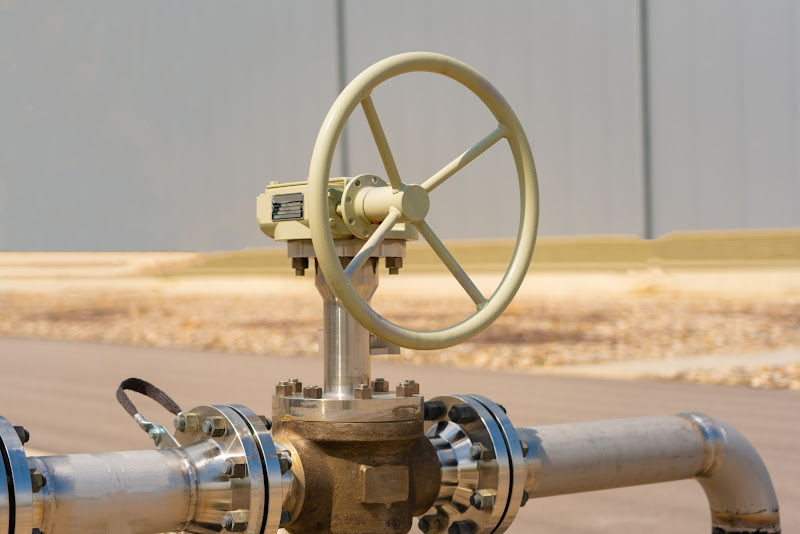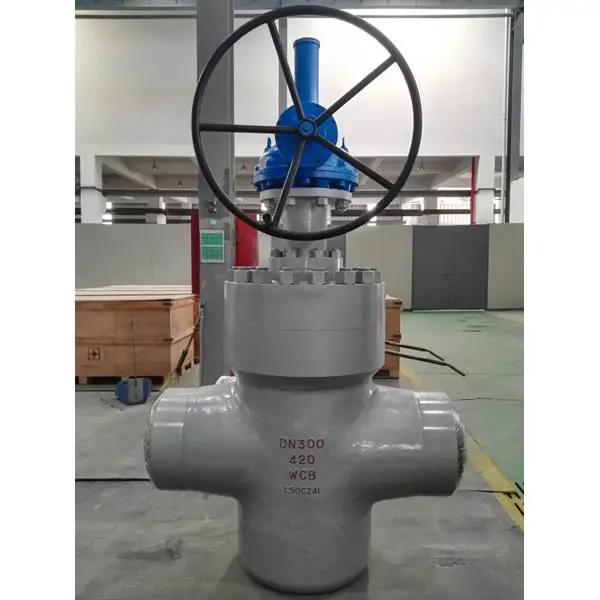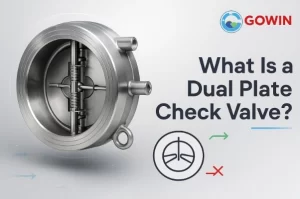Оглавление
ПереключатьA slab gate valve is a specialized valve used to control the flow of liquids such as oil, gas, and other industrial fluids in pipeline systems. It works by using a flat, rectangular gate (the “slab”) that slides between two seat rings to start or stop flow.
In simple terms, it’s like a tight-sealing door inside the pipeline that ensures smooth, leak-free operation. Задвижки шиберные are widely used because they provide a tight seal, minimal pressure drop, and excellent durability under high-pressure conditions.
In this article, you’ll learn everything you need to know about slab gate valves—from their working principle and features to dimensions, common applications, and how they differ from other valve types.
Understanding the Slab Gate Valve: Definition and Purpose
A slab gate valve definition can be summarized in three key points:
- It is a through conduit valve designed to provide a full-bore flow with minimal pressure loss.
- It uses a flat “slab-style” gate that moves perpendicular to the fluid flow.
- It is mainly used in oil, gas, petrochemical, and power industries for isolation purposes.
This type of valve is often featured in pipeline systems where full, unobstructed flow is critical. Because the flow path through a through conduit slab gate valve is smooth and straight, it prevents pressure drops and turbulence, making it ideal for transporting crude oil, natural gas, or other viscous fluids.
How a Slab Gate Valve Works
The operation of a slab gate valve is simple yet highly efficient. When the valve is open, the gate (a solid slab of metal) is completely withdrawn from the flow path, allowing the medium to pass freely. When closed, the gate lowers between two seat rings, effectively sealing the flow.
The design of a slab type gate valve allows it to operate under high-pressure and temperature conditions. The sealing surface between the gate and the seats ensures a leak-proof closure, even in demanding applications.
To visualize this, a slab gate valve drawing or slab gate valve animation often shows a rectangular metal plate moving vertically inside the valve body. The precision of this movement is key to maintaining a reliable seal and consistent flow control.
Features and Key Components
А slab-style gate valve has several distinct features that make it stand out among other industrial valves:
- Full Bore Design: Allows pigs (cleaning devices) to pass through pipelines without obstruction.
- Minimal Pressure Drop: The smooth, straight-through passage minimizes turbulence and energy loss.
- Tight Sealing Mechanism: Uses dual floating seats to achieve a bubble-tight shutoff.
- Corrosion Resistance: Built with high-grade stainless steel and alloy materials to handle aggressive fluids.
- API 6D Compliance: Most modern API 6D slab gate valves follow international standards for performance and safety.
Some valves also include seat sealant injection ports for maintenance and inline repairable designs, reducing downtime and extending valve lifespan.

Applications of Slab Gate Valves
Slab gate valves are used in a wide range of industries, especially where safety and precision matter. Common applications include:
- Oil and Gas Pipelines: Used for upstream, midstream, and downstream flow control.
- Нефтехимические заводы: For isolating high-pressure hydrocarbon lines.
- Power Generation: Helps manage steam and cooling systems.
- Очистка воды: Controls high-volume water flow in municipal systems.
- Refineries and Storage Facilities: Ensures safe isolation and maintenance access.
Due to their reliable sealing and long service life, slab gate valve manufacturers often recommend these valves for large-scale industrial systems.
Slab Gate Valve vs Gate Valve: What’s the Difference?
Although both types look similar, a slab gate valve vs gate valve comparison reveals key differences:
| Особенность | Задвижка шиберная | Standard Gate Valve |
| Дизайн | Flat slab gate between two seats | Wedge or knife-type gate |
| Путь потока | Through conduit, full bore | Partial or restricted flow |
| Уплотнение | Dual floating seats for a tight seal | Single seat, less tight seal |
| Приложения | Oil, gas, and heavy-duty pipelines | General-purpose water or low-pressure systems |
| Обслуживание | Inline repairable | Requires full disassembly |
The slab gate valve offers better durability, tighter sealing, and more efficient flow, making it a preferred choice for critical industrial applications.
Standards and Dimensions
Most API 6D slab gate valves or API 6D slab-style gate valves are manufactured according to international standards. They follow specific slab gate valve dimensions to ensure compatibility across global industries.
Common pressure classes include 150, 300, 600, 900, and 1500, with sizes ranging from 2 inches to 48 inches. Materials often used include carbon steel, stainless steel, duplex steel, and alloy steel.
Manufacturers and slab gate valve suppliers also provide customized designs that comply with ANSI B16.34 and other industrial norms.
Benefits of Using a Slab Gate Valve
The advantages of a slab style gate valve make it indispensable for industrial flow control:
- Leak-proof Operation: Dual-seat sealing minimizes leakage.
- Low Operating Torque: Easy to operate, even in large sizes.
- Long Service Life: Built to withstand harsh environments.
- Reduced Maintenance Costs: Fewer moving parts and inline repair capability.
- Versatility: Works for both liquid and gas mediums.
In simple terms, a slab manual gate valve provides the reliability and performance industries need to keep operations efficient and safe.
How to Choose the Right Slab Gate Valve
When selecting the right slab gate valve, consider these key factors:
- Совместимость материалов – Match the valve material with the fluid being transported.
- Pressure and Temperature Ratings – Ensure compliance with API 6D or equivalent standards.
- Size and Dimensions – Verify the slab gate valve dimensions match your pipeline design.
- Manufacturer Reputation – Always buy from certified slab gate valve manufacturers that perform testing and quality checks.
It’s also recommended to review a slab gate valve drawing before installation to confirm the correct fit and flow direction.

Conclusion: Reliable Flow Control Starts Here
A slab gate valve is more than just a flow control device—it’s a symbol of precision and reliability in modern industries. Its robust design, API 6D compliance, and high sealing performance make it one of the most dependable valves for oil, gas, and petrochemical pipelines.
If you’re looking for top-quality valves from a trusted source, explore the collection of slab gate valves в Промышленный клапан GOWIN. With over 16 years of manufacturing excellence and a strong commitment to quality, GOWIN continues to deliver durable, certified, and efficient flow control solutions worldwide.
Часто задаваемые вопросы
Q1. What exactly does a slab gate valve do?
А slab gate valve controls fluid movement by raising or lowering a solid metal slab between two seats, ensuring tight shutoff and smooth, full-bore flow in pipelines.
Q2. Where are slab gate valves typically used?
They are widely applied in oil and gas transmission, химические заводы, power systems, и water supply networks, providing dependable isolation and minimal pressure drop.
Q3. Why choose a through conduit slab gate valve?
А through conduit slab gate valve ensures unrestricted, straight-line flow with no turbulence, reducing wear, energy loss, and maintenance in high-pressure or long-distance systems.
Q4. What makes it different from a standard gate valve?
Unlike ordinary gate valves, a slab style gate valve offers dual-seat sealing, API 6D compliance, and higher efficiency for demanding industrial operations.
Q5. Are slab gate valves quality tested?
Yes. Most API 6D slab gate valves undergo rigorous ISO-certified testing, covering pressure, leakage, and material strength to guarantee consistent performance and safety.









